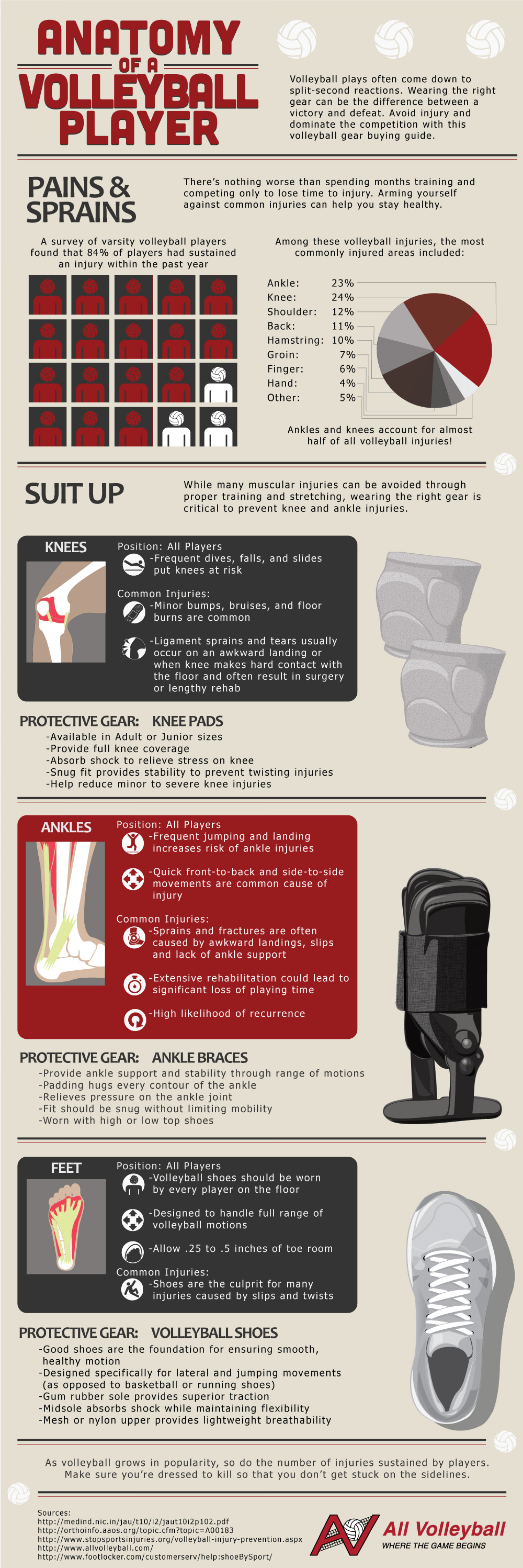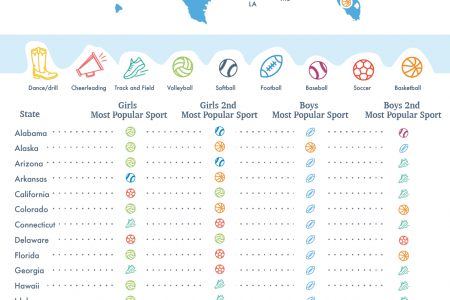
Anatomy of a Volleyball Player
ANATOMY OF A VOLLEYBALL PLAYER Volleyball plays often come down to split-second reactions. Wearing the right gear can be the difference between a victory and defeat. Avoid injury and dominate the competition with this volleyball gear buying guide. PAINS & SPRAINS There's nothing worse than spending months training and competing only to lose time to injury. Arming yourself against common injuries can help you stay healthy. A survey of varsity volleyball players found that 84% of players had sustained an injury within the past year Among these volleyball injuries, the most commonly injured areas included: Ankle: 23% Knee: 24% Shoulder: 12% Back: 11% Hamstring: 10% Groin: 7% Finger: 6% Hand: 4% Other: 5% Ankles and knees account for almost half of all volleyball injuries! SUIT UP While many muscular injuries can be avoided through proper training and stretching, wearing the right gear is critical to prevent knee and ankle injuries. KNEES Position: Al| Players -Frequent dives, falls, and slides put knees at risk Common Injuries: -Minor bumps, bruises, and floor burns are common -Ligament sprains and tears usually occur on an awkward landing or when knee makes hard contact with the floor and often result in surgery or lengthy rehab PROTECTIVE GEAR: KNEE PADS -Available in Adult or Junior sizes - Provide full knee coverage -Absorb shock to relieve stress on knee -Snug fit provides stability to prevent twisting injuries -Help reduce minor to severe knee injuries ANKLES Position: AlI Players -Frequent jumping and landing increases risk of ankle injuries -Quick front-to-back and side-to-side movements are common cause of injury Common Injuries: -Sprains and fractures are often caused by awkward landings, slips and lack of ankle support -Extensive rehabilitation could lead to significant loss of playing time -High likelihood of recurrence PROTECTIVE GEAR: ANKLE BRACES -Provide ankle support and stability through range of motions -Padding hugs every contour of the ankle -Relieves pressure on the ankle joint - Fit should be snug without limiting mobility -Worn with high or low top shoes FEET Position: All Players -Volleyball shoes should be worn by every player on the floor -Designed to handle full range of volleyball motions -Allow .25 to .5 inches of toe room Common Injuries: -Shoes are the culprit for many injuries caused by slips and twists PROTECTIVE GEAR: VOLLEYBALL SHOES -Good shoes are the foundation for ensuring smooth, healthy motion -Designed specifically for lateral and jumping movements (as opposed to basketball or running shoes) -Gum rubber sole provides superior traction -Midsole absorbs shock while maintaining flexibility -Mesh or nylon upper provides lightweight breathability As volleyball grows in popularity, so do the number of injuries sustained by players. Make sure you're dressed to kill so that you don't get stuck on the sidelines. Sources: http://medind.nic.in/jau/t10/i2/jaut10i2p102.pdf http://orthoinfo.aaos.org/topic.cfm?topic=DA00183 http://www.stopsportsinjuries.org/volleyball-injury-prevention.aspx http://www.allvolleyball.com/ http://www.footlocker.com/customerserv/help:shoeBySport/ AV All Volleyball WHERE THE GAME BEGINS (KKX
Anatomy of a Volleyball Player
Publisher
Writer
Source
Unknown. Add a sourceCategory
SportsGet a Quote









